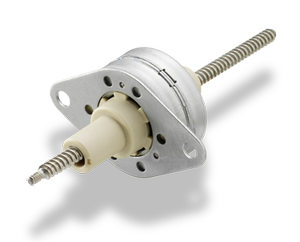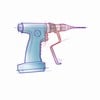Infusion Flow Meters and Motion Solutions
Featured Product from Portescap

Every Infusion Can Now Be Counted - Infusion Flow Meters and Motion Solutions
Intravenous therapy (IV) is one of the most preferred methods of drug delivery because of the speed at which the IV method delivers medicines to patients’ bodies. There are two main types of IV therapy: a gravity-based IV drip system and an infusion pump.
When making these resolutions, don’t forget to keep your miniature motion supplier in mind. In many industries, they supply critical components for your applications/devices, so should be considered key business partners. As you’re searching for your next motion system supplier (or are analyzing your current provider), here are four resolutions we recommend sticking to:
- The gravity-based infusion system works purely based on the gravity pull. The pressure is gained by keeping the height of the saline bag above the patient's heart. If a saline bag is 68cm (27") above the patient’s heart, the infusion pressure available is 50mm Hg (1psi). If the bag is twice that height above the patient, or 136cm (54"), the available pressure is 100mm Hg (2psi). However, the pressure available by gravity may not be sufficient for all infusion requirements; some of the requirements are up to 20 psi, which takes the required occlusion settings into consideration.
- Infusion pumps are the more advanced method of IV therapy. These small pumps are driven by an electric motor to generate the required delivery pressure and can be used in hospital settings or can be portable, based on the treatment and medicine requirements. However, they are also a costlier option that requires a greater amount of maintenance.
In areas of the world where the upfront cost for infusion pumps cannot be justified, gravity infusion systems are commonly used. In the case of the gravity infusion method, strict monitoring must occur to avoid any risk of over or under medication; there also exists the issues of patient discomfort and the IV not being infused correctly. Due to the large number of patients in medical settings, it’s common for a wide gap to exist between the number of resources available and the number of resources required to accurately monitor the IV drip rate for every patient. This, in turn, may lead to complications during treatment, such as overhydration through the IV in children during diarrhea treatment.
IV Monitoring System - The Infusion Flow Meter in Focus
One popular, low-cost solution that has been developed to address the above limitations is an IV monitoring system called an infusion flow meter. This small, battery-powered wireless device is attached to the IV system and counts the individual number of drops of medicine delivered to each patient, thus monitoring the drip rate in real time. As a result, nurses have the ability to monitor many patients’ IV fluids simultaneously through a mobile phone or computer. The device will also alert care providers via sound notifications for flow rate errors and completion of drips. Additional benefits of using infusion flow meters include:
• The correct IV treatment/dosage is administered to the patient
• Alarms ring in case the infusion is stopped, the IV bag is empty, or the flow rate is exceeded
•Complications are reduced, resulting in shorter hospital stays and lowered costs
•Remote monitoring helps nurses confirm the infusion speed accurately and better control the IV therapy
•Virtually eliminates human errors or late intervention in case of any alarms
•Reduces the heavy burden on nurses managing a large number of patients
•Eliminates the need for costly infusion pumps for non-critical infusion treatments, including antibiotics, basic fluids, and nutrition products.
Motion Solutions for Infusion Flow Meters
Miniature motors and drives have been key in powering infusion pumps for many years; however, utilizing motion solutions to drive infusion flow meter applications is a relatively new approach. Digital linear actuators are one of the motor technologies that are best suited for these applications, given that they offer a compact size with price-competitive technology. The use of the DLA is an advancement in drip monitor development as it adjusts, rather than merely monitors, the flow of medicine; thus, the digital linear actuator helps drive the regulator, ensuring that fluids are delivered with consistent quality and reliability.
Many medical companies and startups are developing different types of infusion flow meters, each with its own unique features and technologies, methods of attachment to the gravity infusion system, and supporting software and monitoring/alert capabilities. The inclusion of motion solutions into these applications will continue to bring further advantages for infusion flow meters in the future. If you’re searching for a motion solution for your next infusion flow meter application, reach out to Portescap – our engineers are ready to assist!










